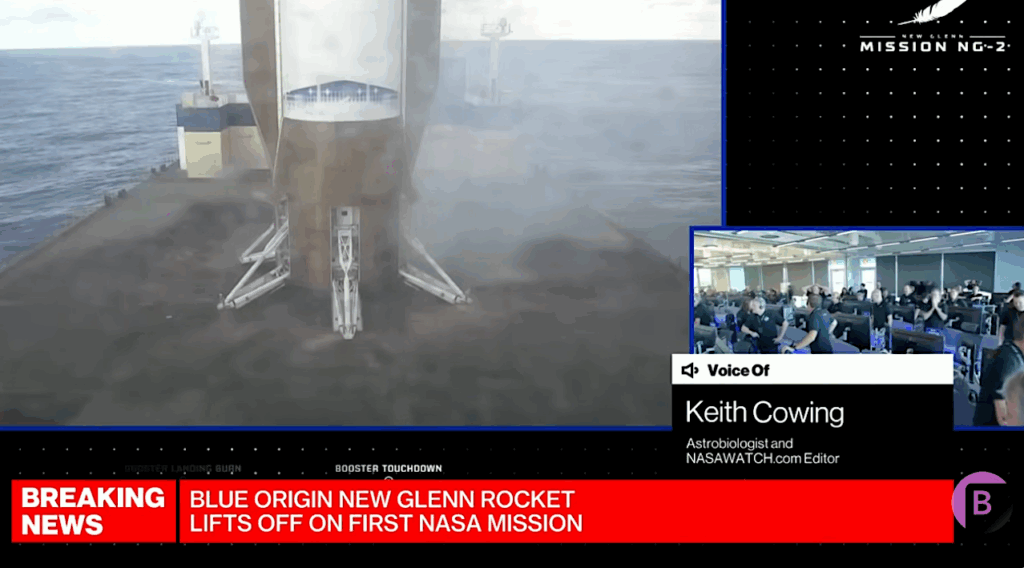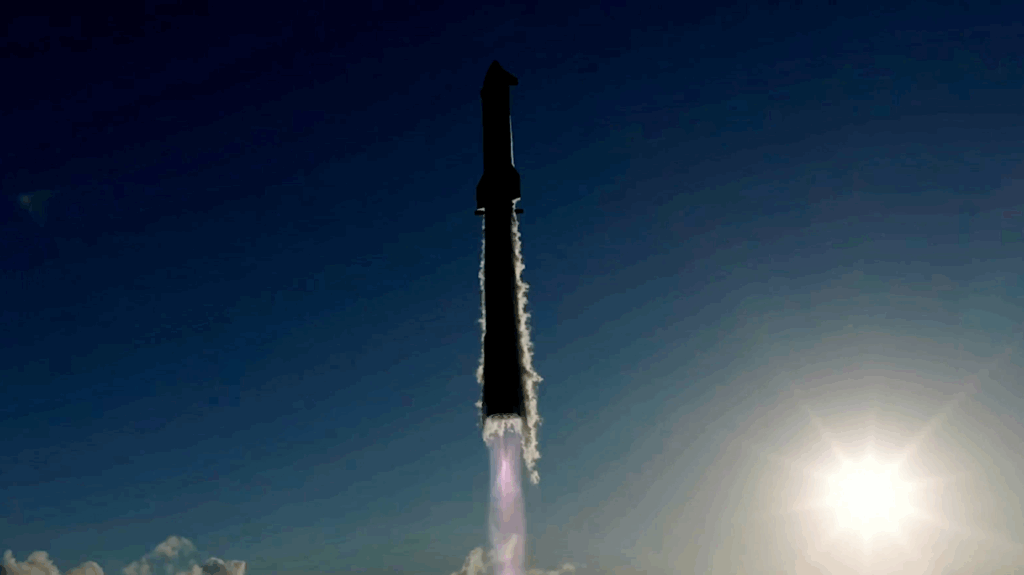Dazed and Confused About Space Commerce At NASA

 Keith’s note: NASA wants you to think that everything they do in low Earth orbit these days has some sort of business potential. Alas, while that may be true, NASA is the least likely place to go if you want to find out what they are actually doing. In fact, most of the people dealing with commerce at NASA have no idea what commerce is.
Keith’s note: NASA wants you to think that everything they do in low Earth orbit these days has some sort of business potential. Alas, while that may be true, NASA is the least likely place to go if you want to find out what they are actually doing. In fact, most of the people dealing with commerce at NASA have no idea what commerce is.
Last week I saw an interesting tweet from @NASA_OSBP – NASA’s Office of Small Business Programs saying “#DYK Over 800 #small businesses are contributing to the dev. of the #SpaceLaunchSystem? #NASA #DreamSmallBiz #NSBW” I replied via @NASAWatch “Interesting @NASA_OSBP can you post that list of companies online? #SpaceLaunchSystem? #NASA “. A few hours later @NASA_OSBP replied @NASAWatch List is pg 61-71 of new the pub. “SLS: A Case for Small Business” just posted at http://www.osbp.nasa.gov/publications.html”. That link led me to the 74 page report “NASA Space Launch System: A Case For Small Business“.
The report, published in 2016, is focused on things as they were in FY 2015. While the overall scope of the SLS program as it related to small businesses is discussed, only a few of those small businesses are profiled in any detailed fashion. There is a nice long list of the 800 or so small businesses associated with the SLS program at the end of the document. However, this is only a list in alphabetical order of the companies, their type, and who they subcontract with. Nothing is included about where the companies are located or what they do. Nor is there any sort of econometric information as to the value of each contract or the impact of these contracts on the local communities.
There is another report listed at the page link tweeted by @NASA_OSBP that looks to have been published in 2015 “NASA Deep Space Human Exploration Spacecraft Orion: A Case for Small Business“. This report is structured in a nearly identical fashion to the SLS report complete with an alphabetical listing of all of the small businesses. But other than that there’s little to explain how or why this is important to the business health of the national economy or to local communities. NASA just wants you to see that they are giving money to lots of small companies that you’ve never heard of.
There does not seem to be an intent to issue these two reports on an annual basis so as to allow people to understand how the program has adjusted to budgets, overall progress, and the addition or deletion of specific small businesses, or the current estimate of overall economic benefit to the communities where these small companies are located. Instead, NASA spends 6 months editing up and dumbing down last year’s data, adding in some boilerplate PR, and then posts the document online. That’s it.
OK, Let’s Ask NASA
So where can you find out what the current NASA small business data is? According to a link at the end of the report you can go to https://vendors.nvdb.nasa.gov and create an account for the NASA Office of Small Business Programs NASA Vendor Data Base (NVDB). Alas, once you register, you see that all it does is let you list information about your company and sign up for updates. You cannot search any databases about other companies. NASA does not seem to be talking specifics. But you know that they track this stuff – just like the large contractors do. They just are not inclined to share that information since too much detail invites scrutiny that the agency is simply unable to handle.
Shortly after I responded to the initial @NASA_OSBP tweet I also sent an email to Glenn Delgado, the Associate Administrator for NASA’s Office of Small Business Programs (OSBP) at NASA Headquarters with a cc: to HEOMD (builder of the SLS) and NASA PAO. I told Delgado “I found this tweet to be very interesting. Can you provide me with a list of the specific 800+ small business companies that are contributing to SLS, where they are located, and what their products/services are in relation to SLS? People often do not appreciate just how pervasive NASA programs are in terms of procurement. Moreover it is often not appreciated how deeply these programs can reach into small communities a great distance from the cities/states where space activities are usually associated.”
While I did get the link back via the @NASA_OSBP Twitter account, after a repeated inquiry, I have heard nothing back from Mr. Delgado or his office (or from HEOMD or PAO for that matter). What is strange about all of this is that NASA never issued a press release about the issuance of either report. In fact their existence is not even mentioned on the NASA OSBP homepage, at HEOMD, or at the main NASA.gov page. You have to know what you are going to find before you look for it. S.O.P. at NASA.gov
 Keith’s update: I got this response from Delgado after this article went online: “Please send me a street mailing address and I will send you a few copies of the booklet that list the companies that worked on the SLS program. There are 20 companies that are highlighted by the large prime contractors and 885 other small business that are listed starting on page 61 of the booklet citing the large prime contractor’s they do subcontracting work for. These company names were provided to NASA by the large prime contractors and we do not have the detailed information on each of them since NASA doesn’t have direct contracts with these firms. That specific information would have to be generated by the large prime contractor.”
Keith’s update: I got this response from Delgado after this article went online: “Please send me a street mailing address and I will send you a few copies of the booklet that list the companies that worked on the SLS program. There are 20 companies that are highlighted by the large prime contractors and 885 other small business that are listed starting on page 61 of the booklet citing the large prime contractor’s they do subcontracting work for. These company names were provided to NASA by the large prime contractors and we do not have the detailed information on each of them since NASA doesn’t have direct contracts with these firms. That specific information would have to be generated by the large prime contractor.”
Why Are SLS and Orion Important To The Economy?
One thing that is oddly lacking from these two reports is the overall “why” of the business side of the SLS or Orion programs. Why is business even important if the whole #JourneyToMars meme is what is driving the program? Other than presenting the standard things that any government agency has to present annual with regard to meeting certain thresholds of utilizing various forms of small businesses, these documents are devoid of any discussion of NASA’s broader interest in space commercialization. In other words SLS and Orion are just several more big NASA projects that use companies who have subcontractors and here’s the list of those contractors.
Why is this odd? Well stop and think about the things that NASA has been pushing these past few years: commercial cargo and commercial crew. Charlie Bolden just loves to talk about all that commercial goodness. There are lots of small business involved in those efforts as well – many of them are probably involved with SLS – and other NASA programs – as well. If the agency is indeed making a large pivot in the way that it does things in space (per Bolden’s cheerleading), one would think that there is a broader, agency-wide policy – one with a strategic plan that covers all of the agency’s procurements so as to make certain that this policy is being implemented equally and effectively. And if this policy/strategy is what’s behind the whole space commerce thing, then bring it on – right? Well, we know that is not happening.
But wait: there’s more: if you listen to NASA HEOMD Associate Administrator Bill Gerstenmaier and ISS Program Manager Sam Scimemi, they are all about commercializing the International Space Station and low Earth Orbit transportation such that NASA can turn its attention (i.e. funding) away from ISS to support cis-lunar and eventually humans-to-Mars programs. Indeed, its the secret sauce they need to make all of the budget numbers work. They have said repeatedly that the successful commercialization of the U.S. segment of the ISS is crucial to the move toward exploration and, according to Gertstenmaier’s presentation to the NASA Advisory Council, were this not to be accomplished then NASA would have to reconsider its plans.
Of course, who is in the driver’s seat when it comes to commercializing the U.S. portion of the ISS? CASIS, of course. They are crowing about their business smarts and accomplishments 24/7/365. Yet look at their progress and it all comes from spending NASA money (with substantial additional overhead) upon which CASIS is dependent for 99.96% of its budget. Private sector investment in CASIS has been minimal – at best. If this initial foray into promoting ISS commercialization is such a subsidized flop, how can NASA expect that a fully commercial ISS will ever be possible? Answer: they just say so in their Powerpoint slides often enough and people accept it.
Again, the basic plan is that SLS and Orion need NASA funding that will, in great part, be freed up by a commercialized ISS (thanks CASIS!) and private sector transportation in low Earth orbit. The basic meme seems to be that the private sector will pay to operate ISS and will buy seats to/from Earth such that tax dollars are no longer needed to pay for this. For the most part, these ISS and transportation activities will be conducted by the very same companies that are building SLS and Orion. Hmmm … that’s interesting.
Feeding The Space Commerce Ecosystem
The substance that the companies behind SLS and Orion use to keep people employed is identical to what they would theoretically use to operate ISS and routine crew and cargo transport: money. The money either comes from NASA or it doesn’t but the financial health of these companies is all running on the same fuel. And whatever money NASA does not have to spend on one thing, it supposedly can spend on another.
But this is an ecosystem – one that seems to want to expand off-world – where government money, money earned from government recycled back into other areas, and money from outside the NASA/contractor honey pot all gets mixed together. If one thing can feed another and spur interest amongst investors while others derive profit for the risks they took with their own money, well, that’s how actual commerce establishes itself.
Given this movement of money in – and out – of things – and how it enables all of those cartoons on their Powerpoint slides, would think that NASA would want to be talking about this. They ought to be chomping at the bit to talk – not just about the small business case for SLS and Orion, but rather, the total business case for SLS, Orion – and ISS, commercial crew, and cargo transport, and payloads that it sends elsewhere – and do so in one global, coordinated business-savvy fashion. you know, as if they actually sat down and thought about this and had some sort of plan.
As I noted before NASA has not really told anyone about these SLS and Orion small business reports. For that matter, neither have the so-called “4 Amigos” (Boeing, Lockheed Martin, Aerojet Rocketdyne, and Orbital ATK) who are the prime contractors behind SLS/Orion. Neither has their yet-to-be formally finalized pro-SLS/Orion lobby group the Coalition for Deep Space Exploration. Nor has AIA (Aerospace Industries Association), AIAA (American Institute of Aeronautics and Astronautics), CSF (Commercial Spaceflight Federation) and other aerospace industry trade and advocacy groups.
Follow The Money (If You Can)
One could question why NASA needs to have so many subcontractors on Orion or SLS. The answer should be obvious: that is how aerospace companies – many large companies – operate. Smaller companies make increasingly specialized things that it makes no sense for a large company to develop given the low volume of [arts needed. SpaceX decided to take a different route – but that’s their decision – and it does not refute standard subcontractor process used in big aerospace. But there is one more calculating aspect to the use of all of these contractors spread across the U.S.: they are spread across the U.S.
By making sure that you have commercial contracts in every congressional district you give members of commerce a reason to want to keep your large program going. You also have a built-in lobbying force (the companies, local and state officials) to pressure members of Congress when the need arises.
I have seen recent charts (and some from the 1980s) that large aerospace companies maintain that go into great detail about how much money flows into every congressional district, links to political donations, etc. NASA does this too (minus the political donation part). So do the large aerospace industry associations like AIAA and AIA. The all have this information at their fingertips so as to be ready to use if a certain member of Congress is going to be approached on something. NASA knows where the money is going. But they won’t tell the rest of us. What they do not have is a clear strategy that outlines where all programs from all directorates and field centers send all of their money. Nor do they have a plan that leverages the inherent syngergies that such a national “market” offers an agency that wants to get strategic in its commercialization efforts.
And if NASA tells you that they do not have this information, you need to be very skeptical of that. One part of NASA may not but others do. But lets assume that NASA does not track its disbursements such that they can tell where (in America) their money goes. Given the claims that the agency makes about being interested in spinoffs, economic growth, etc. you’d have to ask them why such an ongoing analysis is NOT being done. How does NASA know what impact it truly has? Answer: they don’t. They never have.
Commerce and the #JourneyToMars
Running a commercially-oriented space station and going to Mars over the next several decades means a lot of money for business, right? This potential business wherein billions will be spun out of NASA promises to affect companies of all sizes – even the smallest ones. As such, you’d think that NASA would be pulling out all the stops when it issues reports like this by engaging with national, state, and local-level chambers of commerce. There’s no evidence of that either.
Truth be known NASA has no idea what its business case is for all of the things to which it applies the word “commercial”. How could they? All of the people managing these NASA programs are career civil servants – often engineers or astronauts – with absolutely zero real world experience running a company, looking for new business, and dealing with the risks that go with not finding enough work to pay people’s salaries. If you want to have some fun, ask a senior NASA staffer – in a public setting – to define “commercialization” and “privatization” as they relate to space – and NASA. Word salad quickly ensues with one word used to define the other – and vice versa. You will regret having asked the question.
ISS Program Manager Sam Scimemi has been a NASA employee for 30+ years yet he’s the point man on commercializing ISS. He’s talked about making the ISS compatible with disruptive innovation. You cannot prepare for disruptive economic forces. That is why they are called “disruptive”. If you think you are preparing for disruptive factors, well, you’re not. And surprise: they are sneaking up behind you where you are not looking. Scimemi also talks about bringing the entire U.S. economy up to the ISS. Huh? Often times when you listen to NASA talk about business and investment its as if that NASA speaker picked up a new buzz phrase from an article that they just read in an airline magazine. It is not important to actually support space commerce at NASA – only that you seem to be supporting it.
There are very real business opportunities to be realized in space – low Earth orbit, cis-lunar space, Mars, and beyond. The real question is not whether NASA will be involved in any of this. NASA needs to get the right staff on board so as to allow the agency to understand the real difference between proclaiming that something is “commercial” and what it takes to set the stage and then stand back so as to allow actual commercial forces to actually begin to operate.
Until NASA does this, then we’re all going to hear nothing but confusing rhetoric every year at food fight (budget) time as NASA’s commercial stuff is pitted against SLS – with the money for the food fight coming from one limited source: Congress.
Meanwhile SpaceX is headed for Mars.









Anyone can find out about these businesses on Google with a couple of keystrokes; I fail to see why it matters whether they are listed in a document on SLS.
More to the point, why is NASA so intent on maximizing the number of small businesses contracting and subcontracting on its projects? One major support contract was won by a consortium of twelve small businesses. Another requires more personnel to support than the cutoff for the size of the small businesses that can bid on it, so the incumbent is never eligible to bid.
If a small business can supply a part or a service at the best price, then why would it need incentives? If not, then why should the taxpayers pay a premium just to get services from a vast number of small companies, many of them artificially created just to bid on a particular contract? In the “real” world companies often contract out services that are unrelated to their primary business, like groundskeeping, security and plumbing. But when it comes to the core business, every subcontract adds management overhead, contractual relationships, interface control documents, etc. SpaceX, arguably the cost leader for launch services, is the most vertically integrated company in the industry. They even produce their own cameras for monitoring the launch vehicle in flight.
NASA can help our nation create high tech jobs and value-added exports by partnering with industry to advance science and technology. Whether the companies involved are large or small is irrelevant.
I would venture that the push for more small businesses is driven in large part by a desire to have part of each project in each congressional district. This helps NASA with the funding and assure the large contractors a trough to fed at. Spread around what 10%? of the money to increase the political likelihood of continual or increased funding. Seems like a good strategy. What % of NASA expenditures are driven by congressional constituent service (crony capitalism) concerns.
That’s what I was about to say, but you beat me to it. 😉
Science drives most NASA program initiatives, but “What’s in it for me?” drives most government program funding.
Right. NASA has all of this information but if I ask for it they will not give it to me so I have to spend my own time and resources to reassemble information that my tax dollars already paid to assemble.
Great writeup. It’s sadly very, very accurate.
I was recently attending a space commerce “course” for employees that NASA had arranged. One of the people in charge of payload integration on the ISS who was “teaching” the course, started out by rhetorically questioning “who knew that industry and scientists wanted to get payloads on board ISS in a short and expeditious manner-months instead of years? Who knew?”
And she continued, “there are even reasons for this. Who knew?” She asked.
The proper response of course was that ‘everyone who had worked payload and research program integration in manned space flight for the last 40 years, at least since Skylab, knew’.
In business, commerce, and scientific research, time is money. Beyond that it either enables or kills research programs. The real question ought to be: how could they put someone with such little knowledge of commerce, research, academia, and payloads in charge of payload integration on ISS? This is an area they ought to have no shortage of qualified capable people to lead. Why do they choose someone who obviously doesn’t know?
I don’t agree. SpaceX has never applied for nor qualified as a small business under NASA definitions, and does not appear in the alphabetical list of 800. SpaceX has _far_ fewer subcontractors, small business or otherwise, then Boeing. I fail to see how you can argue that small business incentives led to the success of commercial crew when neither of the service providers is a small business and one of the two is, in fact, Boeing, and the other, SpaceX, is the prime example of a company that avoids subcontracting.
In fact, Boeing has a long record of success in the extremely cost-competitive and innovative commercial aircraft market. COTS/CC was more efficient than prior NASA programs because it utilized Space Act Agreements rather than normal contracts. It is NASA that needed to learn a new way of business, not industry. In fact “COTS” originally meant “commercial off-the-shelf”. There was no specific requirement for new technology. Moreover the proposing companies had to invest their own money in demonstrating their systems, something that would be frankly impossible for a small business.
I agree with you that NASA is less effective in advancing commercial technology than its predecessor the NACA, and that the Obama Administration tried to correct this with an increased emphasis on aeronautics and space technology, and that Congress to a great extent blocked this initiative.
I’ve worked as a Government employee, Government contractor, private sector employee (small business mostly) and business owner. The most consistent factor between them is that they really don’t understand how each other works.
Certainly is true. Not only do we underestimate the difficulty of others’ business, we over estimate our own ability to do others’ business. There’s a term for this: the Kruger-Dunning Effect.
Remember the movie ‘Airport’? Isn’t that the one that had a flight attendant landing a 747 via radio cues? Same thing.
And in my business, which includes land planning, I run into so-called ‘planners’ all the time, guys with no clue about business but ‘experts’ on how to revitalize a downtown area (as an example).
And the best example of all, of course, is CASIS.
Keith, I certainly can’t comment on all of your topics but I can talk definitively about Orion small business contracting. As you well know government contracts have a variety of goals for socio-economic contracting. I am proud that Orion regularly meets and exceeds those goals. As the Orion program manager for LM I have visited several of these companies across the country. We strive to get the best suppliers available – not as surmised – supplies in every state. We were proud that Orion was the first project that the NASA Small Business Office chose to highlight. You are right that we all have processes that choose the material that we will “make or buy”. Once that is complete we release the procurement documents to receive our suppliers. They range from large and small machine shops to connector and fasteners, all across the country. The Orion supply chain has done an outstanding job for LM and NASA.
Did Griffin REALLY want an innovate break out launch company with COTS? or was COTS funded at a rate that was trying for no successes so that a
“see I told you big aerospace is the only ones that can do this”
That was there was no pressure for the Ares I?
Gersteinmeyer stated how the Ares I was the prime launcher and PLAN A and was even going to be able to do cargo and crew to LEO. It was only after the Ares I keep failing behind on schedule that Gerst said the COTS cargo was now the Plan A and more money and time was devoted to it to make sure they worked?